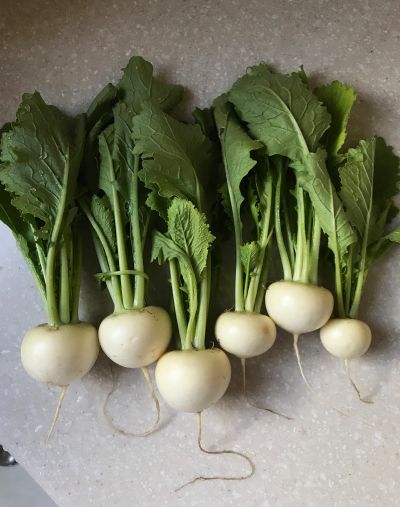In the Garden: Time’s almost right to plant cool-season crops

It is such a delight to be able to talk about planting vegetables now that winter is behind us. While it’s too early for warm-season crops such as tomatoes, peppers and squash, you can plant plenty of cool-season crops in the coming weeks.
Arugula, beets, carrots, lettuce, onions, parsnips, spinach, Swiss chard and turnips all fall into this category. The seeds of these crops can be direct sown in the garden in early spring as soon as the ground can be worked.
But what does that mean? The short answer is when your soil is dry and crumbly. Grab a handful of soil and squeeze it. If the soil is muddy and dripping wet, it is still too wet. If you can poke a finger into that ball of soil and it easily falls apart, conditions are just right.
I’ve been keeping records every year in an effort to fine-tune the ideal starting times for planting seeds directly in the garden. I usually sow all the above-mentioned crops between April 10 and 15 depending on how the weather forecast looks.
The first thing to do is create a seed bed by gently loosening the top 2 inches of soil. It’s important to avoid turning over all the soil in your garden, whether by shovel or rototiller, because this damages the soil’s structure.
There are so many microorganisms and helpful creatures in our soil, which assist in aerating it and making nutrients available to the roots of plants. That’s why I recommend using a light touch when working with the soil.
Take a couple of minutes to read the back of your seed packets. They will indicate how deeply to plant the seeds, how far apart to space them within the rows and the ideal distance between each row of seeds.
The packets also indicate how long the seeds typically take to germinate (sprout) and how long each crop requires to mature. Don’t forget to label your plantings so you remember where everything is.
As your seedlings begin to grow, you’ll want to refer to the seed packets for one other critical item: how far apart to space the seedlings once they’ve grown 2 or 3 inches tall.
For example, if you’re growing root crops such as beets, turnips, carrots or parsnips, the plants need enough room to develop good-sized roots. Crowded plants will struggle to grow, and the end result will be a disappointing harvest.
Keep an eye on the moisture in the soil. It’s important to avoid under- or overwatering your plants. The easiest way to check this is by poking your finger into the soil down to the second knuckle. It should feel lightly moist, not bone dry or sopping wet. As the daytime temperatures warm up, you will need to adjust your watering time.
While all these crops are easy to grow, insects called leafminers will damage the leaves of beets, spinach and Swiss chard to the point where they’re unappetizing. Since none of these crops needs to be pollinated, plant them together and cover the bed with a layer of floating row cover. Garden centers and online suppliers sell this lightweight fabric that prevents adult flies from laying eggs on the leaves.
This is a great time of year to get the early version of your garden going. Before you know it, you’ll be reaping the rewards of tasty, homegrown produce.
Susan Mulvihill is author of “The Vegetable Garden Pest Handbook.” She can be reached at susan@susansinthegarden.com. Watch this week’s “Everyone Can Grow a Garden” video at youtube.com/susansinthegarden.